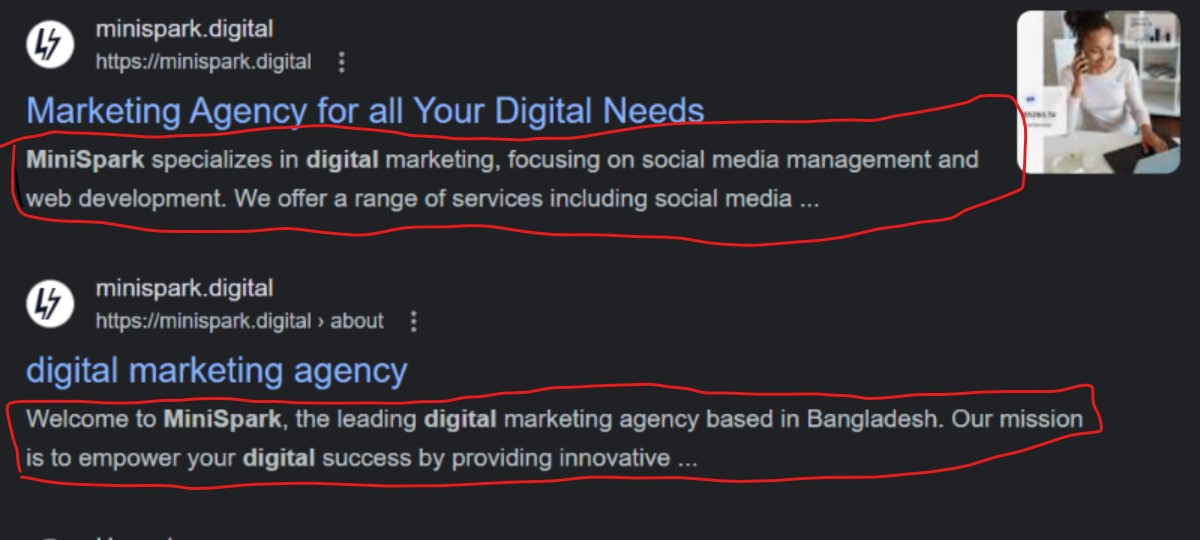Introduction
Master the Basics of SEO in Digital Marketing for online success! Explore key strategies and optimize your website with expert insights. In the dynamic world of digital marketing, Search Engine Optimization (SEO) has emerged as a cornerstone for success and today we’ll discuss the basics of SEO in Digital Marketing. What exactly is SEO, and why is it so crucial for your online presence? Essentially, SEO comprises various strategies, techniques, and practices aimed at increasing your website’s visibility in search engine results, thus driving more organic (non-paid) traffic to your site. As digital marketers, SEO beginners, business owners, and students dive into this virtual sea of opportunities, understanding what SEO is and how to implement it effectively can turn a business from a hidden gem into a market leader.
Understanding Search Engines: The Basics of SEO in Digital Marketing
How do search engines like Google decide which pages to serve up first for a given search query? It’s all about relevancy and authority, dissected by algorithms that evaluate hundreds of factors. These range from the quality and originality of content to the accessibility and usability of your site. By understanding the key algorithms and staying updated on the latest changes, you position your website to be favored by search engine criteria.
On-Page SEO
The on-page elements of SEO represent the aspects of your website that you have direct control over. Key among these are:
- Keyword Research and Optimization: This involves identifying the terms and phrases your target audience uses to search for products or services like yours and strategically integrating them into your site’s content and tags.
- Meta Tags and Descriptions: Through concise and compelling meta title tags and descriptions, you help search engines understand the content of each page, which can influence click-through rates from the search engine results pages (SERPs).

- URL Structure and Internal Linking: A clear and hierarchical URL structure aids both users and search engines in navigating your site, while judicious internal linking encourages deeper exploration and distributes ‘link equity’ to enhance page authority.
Keyword Research Tools
As part of effective on-page SEO, keyword research is crucial and numerous tools can assist with this task. Below are five keyword research tools that are commonly used by digital marketers:
- Google Keyword Planner: This free tool by Google provides insights into keyword search volume and competitiveness. It’s directly integrated with Google Ads, making it a handy tool for Pay-Per-Click (PPC) campaigns.

- SEMrush: SEMrush offers comprehensive keyword research capabilities, delivering not only keyword ideas but also information about keyword difficulty, relevant SERP features, and competitive data.

- Ahrefs’ Keywords Explorer: Ahrefs provides a wealth of information on keywords, including search volume, keyword difficulty, clicks data, and more. Plus, it covers over 10 search engines, not just Google.

- Moz’s Keyword Explorer: Moz’s tool provides keyword suggestions, SERP analysis, and competitive insights. It presents a Priority Score, combining all critical metrics to help you prioritize your keywords.

- Ubersuggest: This free tool by Neil Patel provides keyword suggestions, search volume, SEO difficulty, Paid Difficulty, and Cost Per Click (CPC) data. It also gives content ideas based on your target keywords.

Off-Page SEO
The work doesn’t stop at your own site. Off-page SEO refers to activities undertaken outside of your website to impact your rankings within search engine results pages. This includes:
- Backlink Building Strategies: The inbound links from other websites act as endorsements that improve your site’s reputation.
- Social Media Promotion: Leveraging social platforms can enhance your content’s reach and can sometimes contribute to your site’s overall search visibility.
- Influencer Collaborations: Partnering with influential figures within your industry can elevate the trust and authority of your brand and its content.
Checklist for Off-Page SEO: The Basics of SEO in Digital Marketing
To ensure successful off-page SEO, here’s a checklist you can use:
- Backlink Analysis: Review the quality of your existing backlinks. Make sure they are from relevant, high-authority websites. Use tools like Ahrefs or Moz to conduct this analysis.
- Competitor Backlink Analysis: Study the backlink profiles of your top competitors. This can offer insights into potential linking opportunities.
- Link Building Strategy: Develop a robust strategy for obtaining more high-quality backlinks. This could include techniques like guest blogging, skyscraper content, and broken link building.
- Social Media Engagement: Regularly share your content on social media platforms. Engage with your audience and encourage them to share your content.
- Influencer Outreach: Identify influencers within your niche and reach out to them. Offer them valuable content to share with their audience, or collaborate on content creation.
- Brand Mentions: Monitor the Internet for mentions of your brand. If your brand is mentioned without a link, reach out and request one.
- Forums and Q&A Sites: Participate in industry-relevant forums and Q&A sites like Quora. Provide valuable answers and subtly promote your content.
- Local SEO: Make sure your business is correctly listed in local directories and on Google My Business. Encourage customers to leave reviews.
- PR and Press Releases: Leverage public relations and press releases to generate buzz about your business and potentially earn more backlinks.
- Content Promotion: Don’t just create content. Make sure to promote it. This could involve email marketing, social media promotion, PPC ads, and more.
Technical SEO
The technical aspects of your website have an indirect yet significant impact on its SEO. This includes ensuring:
- Website Speed and Performance: Slow loading times can deter users and signal poor quality to search engines.
- Mobile Optimization: With mobile-first indexing, Google prioritizes mobile-friendly websites as the majority of users now access the web via mobile devices.
- XML Sitemaps and Robots.txt: These files communicate with search engines, informing which pages should be crawled and how to navigate your site.
Measuring SEO Success
Evaluating the results of your SEO efforts is essential for ongoing optimization and it fall under the purview of one of the basics of SEO in Digital Marketing. You’d be tracking:
- Key Metrics: Organic traffic, conversion rates, bounce rates, and rankings for your targeted keywords.
- Google Analytics and Search Console: Indispensable tools that provide a wealth of data on how your site is performing in the search and pinpoint areas for improvement.
SEO Best Practices
A sustainable SEO strategy relies on consistent best practices:
- Content Creation and Optimization: Continually producing high-quality content that addresses the needs and interests of your audience is essential.
- User Experience and Site Architecture: A well-organized site that offers smooth navigation and optimal user experiences ranks better and keeps visitors engaged longer.
- Local SEO: For businesses that have a brick-and-mortar presence or serve a specific geographic area, local SEO is key. This involves optimizing your site to appear in local search results and managing your business’s listing on platforms like Google My Business.
Case Studies and Examples
Inclusion of practical examples gives us a glimpse into the real-world impact of SEO:
- Impact on Small Businesses: A local bakery, through focused keyword targeting and content marketing, was able to quadruple its organic traffic in six months, significantly boosting sales.
- SEO in Large Corporations: Amazon, for instance, fine-tunes every product page to optimize for relevant long-tail keywords, driving immense organic search traffic to solidify its market position.
- SEO in Content Marketing: By focusing on strategic keyword usage and building authoritative backlinks, a once-obscure blog managed to skyrocket its readership and engagement.
Strategies for Effective SEO: The Basics of SEO in Digital Marketing
To effectively employ SEO and ensure all The Basics of SEO in Digital Marketing, it’s important to adopt a comprehensive, multi-pronged approach that aligns with your business objectives. Below are some key strategies to consider:
- Comprehensive Keyword Research: This involves identifying not only high-volume keywords but also long-tail phrases and semantically related terms. Tools like Google Keyword Planner or SEMRush can be instrumental in this process.
- Content Marketing Strategy: To capture and retain organic traffic, your content should be valuable, engaging, and align with the search intent of your target audience. Regularly update your blog, create informative How-to guides, FAQs, and invest in video content.
- Mobile-First Approach: Design and optimize your website with mobile users in mind first, given the growing trend of mobile web browsing.
- Voice Search Optimization: With the rise of digital assistants like Alexa, Siri, or Google Assistant, optimize for voice search by incorporating conversational keywords and phrases in your content.
- Link Building: Cultivate relationships with reputable websites for high-quality backlinks. Guest blogging, content syndication, and influencer collaborations can be effective strategies.
- Technical SEO: Routinely check and optimize your site’s loading speed, ensure your site is easy to crawl and index, and fix broken links and 404 errors.
- User Experience (UX) Optimization: A positive user experience can lead to better engagement metrics and improved ranking. Simplify navigation, use attractive visuals, and ensure your site is easy to read and navigate.
- Social Media Integration: Promote your content on social media platforms to drive engagement, create brand awareness, and potentially generate backlinks.
Remember, SEO is a long-term investment. Consistency, patience, and continuous optimization are key to a successful SEO strategy and before implementing SEO you will need to learn about all the Basics of SEO in Digital Marketing.
Conclusion
As you embark on enhancing or learning about SEO and the Basics of SEO in Digital Marketing for your digital marketing endeavors, remember that search engines’ goal is to provide the best possible experience for their users. By aligning your website and content with this mission through consistent and ethical SEO practices, you not only elevate your site’s visibility but also contribute to a higher-quality web ecosystem. Whether for small blogs or large corporate empires, the principles of SEO hold the potential to unlock incredible growth and opportunities.
Stay abreast of the latest trends, continuously refine your approach, and always keep the user’s experience at the forefront of your strategy. The world of SEO is complex, but with the right techniques, tools, and mindset, it can be mastered to dramatically elevate your online presence and success.

